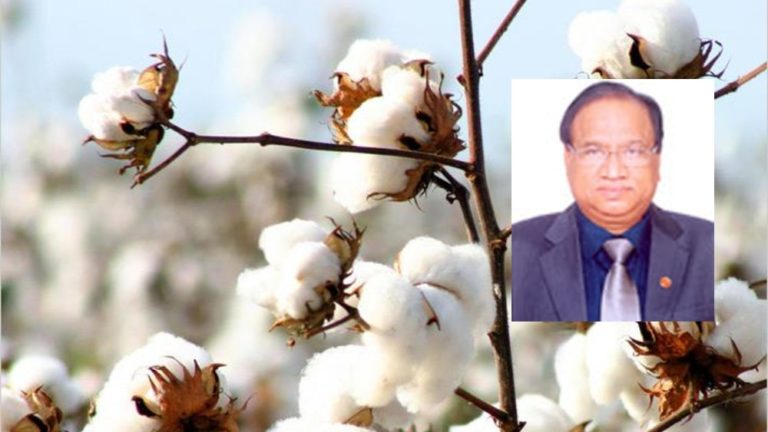Established in 1970 under the Ministry of Textiles Cotton Corporation of India (CCI) is a Public Sector Undertaking which in the initial period of setting up, was the only public sector undertaking in the field of marketing of cotton. CCI has played a role of a canalizing agency for imports of cotton and purchase of raw cotton for giving necessary price support to enterprising cultivators and also for procuring raw cotton for textile mills. The role and function of CCI continued to enlarge with the changing cotton scenario. The major role of the CCI is to undertake price support operations, whenever the market prices of kapas fall below the minimum support prices (MSP) announced by Government. of India, without any quantitative limit. Besides MSP operations, to fulfill the raw material requirement of the domestic textile industry particularly for a lean season, CCI undertakes commercial purchase operations.
With a view to safeguard the economic interest of cotton farmers in all the cotton-growing regions and to ensure a smooth supply of good quality cotton to the textile industry in India, the Corporation is having PAN India presence through headquarters at Navi Mumbai (Maharashtra), 19 branches and more than 400 cotton procurement centers in all major cotton-growing States. CCI Operations cover all the cotton-growing states in the country comprising of Punjab, Haryana, and Rajasthan in Northern Zone; Gujarat, Maharashtra, Madhya Pradesh & Orissa in Central Zone and Andhra Pradesh, Telangana, Karnataka & Tamil Nadu in Southern Zone. With Indian Economy & Market in a free-wheeling chat Shri Pradeep Kumar Agarwal, Chairman-cum-Managing Director, CCI, gives a panoramic view about the cotton procurement, government policies and programs, and the important role of CCI in shaping up the future for the cotton growers as well as the users.
“CCI offers its good cotton through e-auction at most competitive terms”
There are a lot of disruptions happening in the entire segment of the economy in these critical times. Your take?
COVID-19 pandemic has come as a shock to the society, healthcare system, and economic activities worldwide. The supply chain of textile raw materials including cotton, intermediaries, and production of finished cotton products around the world were significantly affected due to the outbreak of COVID-19. As a result, there was a fall in domestic and international cotton consumption which resulted in a sudden decline in cotton prices globally and a fall in demand for cotton bales both at the domestic and international levels. In such a scenario, CCI, being a nodal agency of the Government of India supported the cotton farmers by procuring cotton under MSP operations to safeguard the cotton farmers from distress sales.
This step not only helped the cotton farmers in the difficult phase of the COVID-19 pandemic but also helped Textile Mills including MSME Mills in India to have an assured supply of good quality cotton at a competitive price through e-Auction conducted by CCI on daily basis.
What is the current status of the cotton sector?
India currently wears the crown as the leading producer of cotton amongst all the countries of the world. As per Committee on Cotton Production and Consumption (COCPC) meeting dated 25th January 2021 and recent updates from the Ministry of Agriculture during cotton season 2020-21 production of cotton is estimated to remain at par with last year i.e. 365 lakh bales. Consumption of cotton is expected to increase by 18% to 330 lakh bales as against 269 lakh bales during 2019-20.
As Indian cotton prices are most competitive in the present scenario, therefore, ample export opportunities are available for the export of cotton, yarn, and textile products. As a result, import is expected to reduce by 29% to 11 lakh bales as against 15.50 lakh bales of last year, and export may increase by 59% to 75 lakh bales as against 47 lakh bales of last year.
CCI’s mobile app ‘Cott-Ally’ is considered to provide an authentic source of information related to the cotton sector. Can you brief how the corporation is using IT and its further plans?
CCI developed the Cott-Ally, a free mobile-based application to keep the cotton farmers updated about variety-wise MSP rates of cotton, nearest procurement centers of CCI, payment tracking, etc in their regional languages so that cotton farmers need not depend on any commission agents for such information.
Besides this, in order to improve work culture, transparency, and accountability and also to enhance result orientation, CCI is promoting the use of information technology in its core activities and considerably reduced manual intervention in pursuit of the concept of the paperless office.
In this endeavor, the corporation has implemented a 100% ERP system in its all core activities like purchase, sale, finance, HR/Payroll, CRM, etc., and adhering to 100% cashless transactions. Now, 100% payment of seed cotton, purchased under MSP from cotton farmers, is being disbursed to them directly in their bank account through RTGS/online system. To make this system more robust and systematic, CCI also started OTP-based registrations of cotton farmers in the ERP system.
The Corporation has implemented 100% sales of Lint cotton bales and cottonseed through an online e-auction system to sell its stock in a more transparent manner. It not only keeps confidentiality of the e-auction process but bidding is made on a real-time basis which helps in making price discovery based on the prevailing market.
The ongoing farmers’ agitation has MSP as the main point. What role does CCI play in the Textile ministry’s functioning in terms of fixing MSP? And what is your opinion on this?
CCI, being a Central Nodal Agency of Government of India under Ministry of Textiles is already undertaking procurement of FAQ grade seed cotton under MSP operations in a big way since the last two consecutive years as per MSP guidelines issued by the Government of India.
As regards the role played by CCI in fixing of MSP, it is stated that the Ministry of Agriculture& Farmers’ Welfare, Government of India, fix the MSP for Medium and Long-staple group of Fair Average Quality (FAQ) grade seed cotton based on the recommendation of its advisory body, Commission for Agricultural Costs & Prices (CACP). Before finalizing the recommendation, CACP takes into account the inputs received from farmers’ representatives/associations, officers from Central & State Governments/ Departments, and various other stakeholders for preparing their report. CCI also submits its inputs on the MSP of cotton through the Ministry of Textiles.
Under MSP operations, Cotton farmers feel empowered by the presence of CCI as they are assured to get a Minimum Support Price for their FAQ grade kapas when there is a lukewarm response from traders and mills due to the depressed market conditions. The intervention under MSP operation of cotton benefits around 20% to 70% of cotton farmers in India. Also on average, 30% to 35% of cotton farmers are directly being benefitted from the procurement under MSP operations.
What are your plans and strategy to improve the core competitiveness of the Corporation?
With PAN India’s presence through more than 450 cotton procurement centers in all the cotton-growing regions, CCI procures all varieties of Fair Average Quality cotton. Thus, it is ‘One Stop Shop’ for good quality Indian cotton for textile mills. In order to improve the competitiveness in its business activities, the corporation strikes a balance between offering a fair price to the cotton growers and excellence to cotton buyers.
Fiber quality is of paramount importance for the Corporation. For this purpose, the corporation has initiated a dual check mechanism to ensure the quality of cotton during procurement from farmers and as well as during processing in ginning and pressing factories. On the one hand, all the field officials of CCI are advised to strictly adhere to procure FAQ grade cotton by a scientific assessment of staple length, micronnaire, and moisture contents at the spot by using modern equipment viz, digitalized moisture meters, micronaire testers, and portable ginning machines. On the other hand, in order to provide good quality cotton to the Textile Industry, CCI has put stringent quality norms for ginning and pressing factories to give a better quality of cotton as per parameters fixed for lint realization, shortages, trash, and packing quality of bales.
How the CCI provides cotton?
CCI gives first preference to Star Rated Modernized Composite Ginning & Pressing factories in its tender for processing of kapas by adding the order of preference in the tender itself. Modernized star-rated G&P factories are equipped with state-of-art infrastructure which helps in maintaining the quality in the processing of cotton due to grade-wise segregated processing and lesser trash and contamination.
CCI offers its good cotton throughout the season through e-auction at most competitive terms & conditions without any hoarding and speculation. Thus, CCI tries to maintain the price intact to safeguard the domestic textile industry and to make them available the good quality raw material at a competitive price. CCI will continue to take necessary steps and IT-enabled services on a need basis to improve the core competitiveness, brand image, and market share.






















